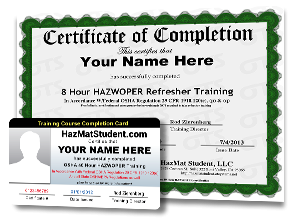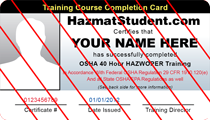Who Should Take This Course?
This OSHA 24 Hour HAZWOPER Online course provides current, state-of-the art training for those needing to meet the 24 Hour HAZWOPER training requirements for OSHA standard 29 CFR 1910.120(e)(3)(ii) and 29 CFR 1926.65(e)(3)(iii). This includes workers occasionally on site only for a specific limited task, who are unlikely to be exposed to hazardous substances over the permissible and published exposure limits.
This 24 Hr HAZWOPER training includes course topics such as: hazardous materials recognition; toxicology; site characterization & analysis; PPE; respiratory protection; decontamination; hazardous waste sampling methods; spill management and containment; HAZWOPER emergencies; and much more. The 24 hour HAZWOPER class also provides a thorough overview of the equipment available to HAZWOPER workers, while the HAZWOPER 40 hour training course provides more detailed equipment training. The HAZWOPER 24 Hour training does not require or provide any hands-on training.
Students of the 24 hour course may later upgrade to the 40 hour HAZWOPER level by taking the 16 Hour HAZWOPER Upgrade. There is no time limit for when someone may add the 16 hour course to the initial 24 hour course.
For more information on OSHA HAZWOPER training requirements or the HAZWOPER courses we offer, visit our HAZWOPER Training page or view our Infographic.









